Linux basics-centOS7 installation
1. New features of centOS7/RHEL7:
1、 Identity management
(1) Kerberos's cross-platform trust mechanism: Kerberos will be fully compatible with Microsoft Active Directory, enabling full use of Active Directory for authentication.
(2) REALMD: This function simplifies the configuration of RHEL joining Microsoft Active Directory, and supports automatic discovery of domain information.
RHEL 7 adds two key new features to improve the way RHEL handles AD.
Now, cross-realm trusts are established between RHEL 7 and AD, so AD users can access resources without logging in on the Linux side. Another AD-related function added by RHEL 7 is realmd, which automates querying and adding AD (or other Red Hat certification services) DNS information.
2、 Performance management
(1) Performance assistance tools: RHEL7 provides a new framework and a new general graphical interface to provide performance assistance management. Can collect and analyze system bottlenecks.
(2) Tuning and tuning configuration: RHEL7 provides dynamic tuning solutions to solve system performance bottlenecks. The system administrator can also manually modify the system preset scheme to achieve the tuning effect
3、 Virtualization
(1) Enhanced RHEL7 virtual machine: fully compatible with vmwarevshpere architecture, RHEL7 comes with open vmtool, 3D graphics driver and OpenGLX11 support. Makes RHEL7 more convenient to deploy on the vmware platform. RHEL 7 also supports fast communication between vmware esxi.
(2) Virtual I/O: Provides an interface for calling the underlying PCI device for each virtual machine to achieve kernel-level isolation. Improve the safety and compatibility of the machine
(3) Virtual machine USB3.0 interface support
(4) QCOW2 format file type snapshot support
(5) Nested virtualization support, OpenStack can be installed and configured in KVM
(6) Enhanced technical support for VMWARE, with open-vm-tools instead of vm-tools
(7) Support the hottest technology Docker
Docker is based on the current popular application virtualization technology. The application is packaged in Docker, completely isolated from the system and other applications, so it can be migrated between systems and run normally.
4、 File system
(1) RHEL7 chooses XFS as its default file system.
RHEL7.0 uses XFS by default when it is installed. It does not mean that the original EXT file system is no longer used. RHEL 7 still supports ext4. But facing the explosive growth of data in the future, the ext file system has been It seems more and more powerless. The XFS file system is entirely born for big data. A single file system can support up to 8EB in size, and the size of a single file can reach up to 16T. It also provides a rich log system and is a powerful file system for big data storage.
XFS is a file system with high scalability and high performance. It is also the default file system of rhel7/centos7. The xfs file system can be backed up and restored through the tools xfsdump and xfsrestore.
5、 Network management
New network management interface NMCLI
6、 Service management
(1) Use systemctl to call the service script
RHEL7 uses systemd to replace the original sysV, and systemd manages the services in the system. Systemd defines a completely different way to manage services and system processes from the original sysV init process. Makes the services in the system can automatically resolve the dependencies between services, and can support parallel startup of services! In other words, RHEL7.0 is faster and more stable than the original sysV operating system, and it also supports Docker perfectly!
7、 RHEL7 desktop
Use the latest Gnome 3 as the default desktop environment, and the latest KDE 4.10 as the alternative desktop environment.
**2. RHEL7 installation: **
If the production server has large memory (more than 4G memory), it is recommended to install the 64-bit version rhel-server-7.0-x86_64-dvd.iso
After booting and loading, as shown below:
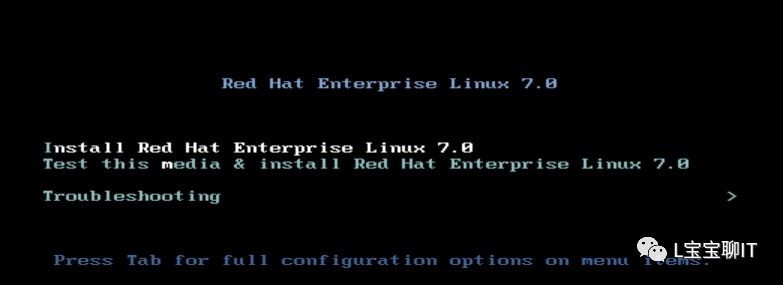
Interface description:
Install Red Hat Enterprise Linux 7.0 Install RHEL7 system
Test this media & install Red Hat Enterprise Linux 7.0
Test the installation medium and install the RHEL7 system (compared to RHEL6, advance the detection medium to the initial installation page)
Troubleshooting troubleshooting options
Explanation of Troubleshooting options: as shown below:
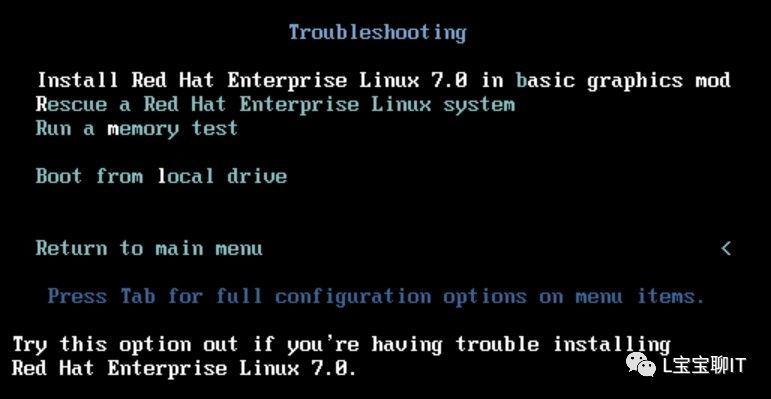
- Install basic graphics mode
- Install rescue system
- Memory test
- Boot from local drive
- Back to the menu
Return to the menu, select the first item Install Red Hat Enterprise Linux 7.0 and press Enter, the system starts to install as shown below:
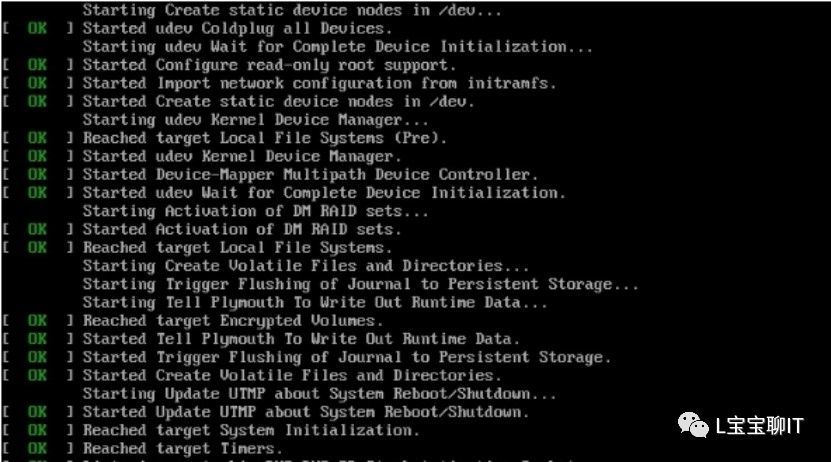
The language of the installation process is selected. It is recommended to install the English version on the official production server. Keep the default English here and click Next
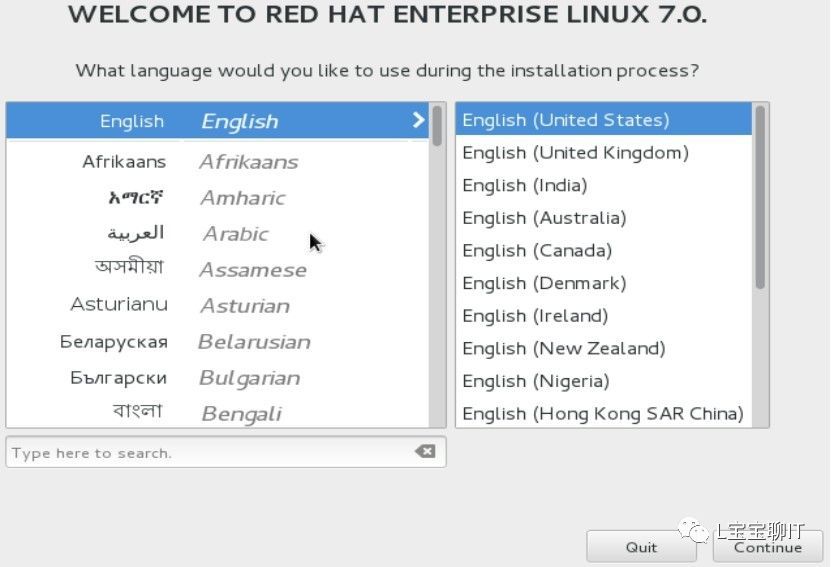
Click continue
Enter the installation summary page, from this page, the three major sections are:
LOCALIZATION: You can see here to configure the time and time zone, keyboard settings and language
SOFTWARE software: Under SOFTWARE, you can go to the installation source and custom software installation, the default system chooses the minimal installation
SYSTEM system: install target equipment and network configuration
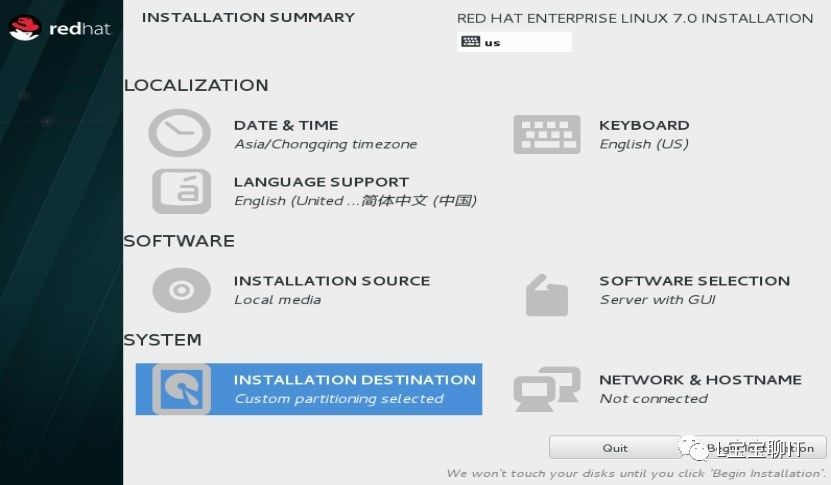
Attach:
You can perform disk partition management in the installation destination of the system: automatic partitioning and manual partitioning. Here I create the following partitions:
/boot partition 500MB
swap partition 4096MB (generally set to 2 times the memory)
/Partition remaining space
Note: The production server is recommended to be divided into a separate /data partition to store data
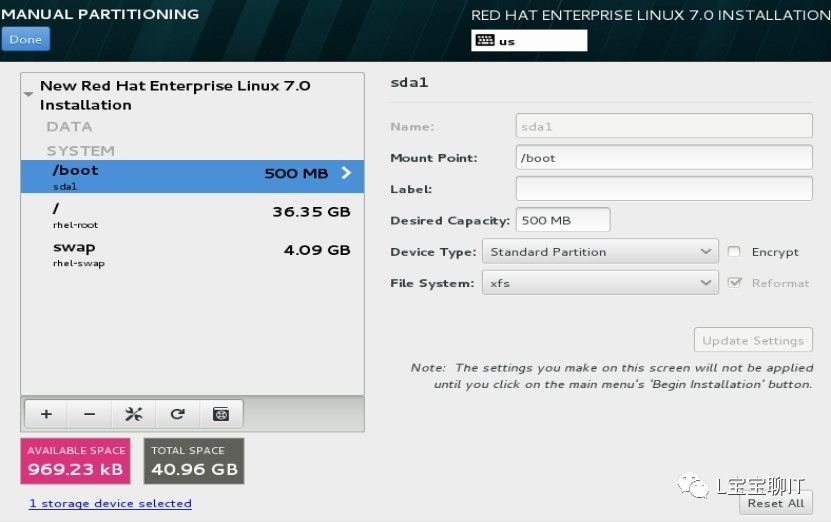
Click done in the upper left corner to enter the interface below

Click acceptchanges to return to the installation summary page, click begin installation, and enter the following interface:
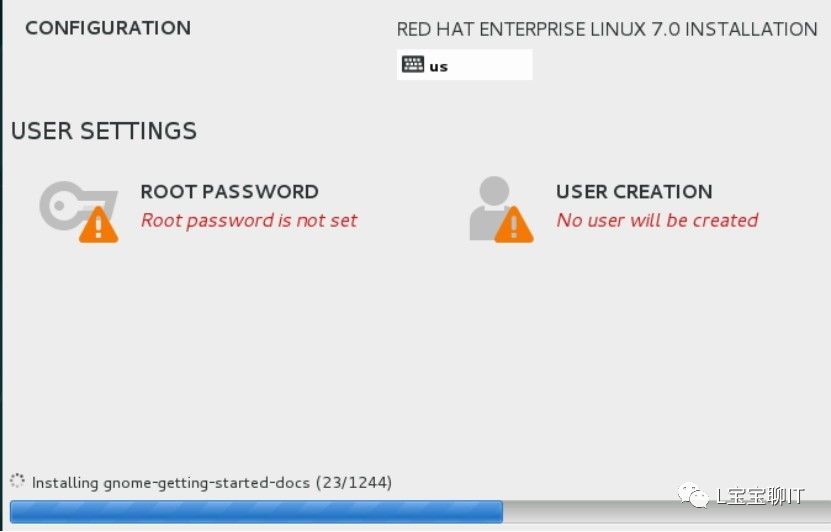
Select the root password of usersettings and set the password of the root account.
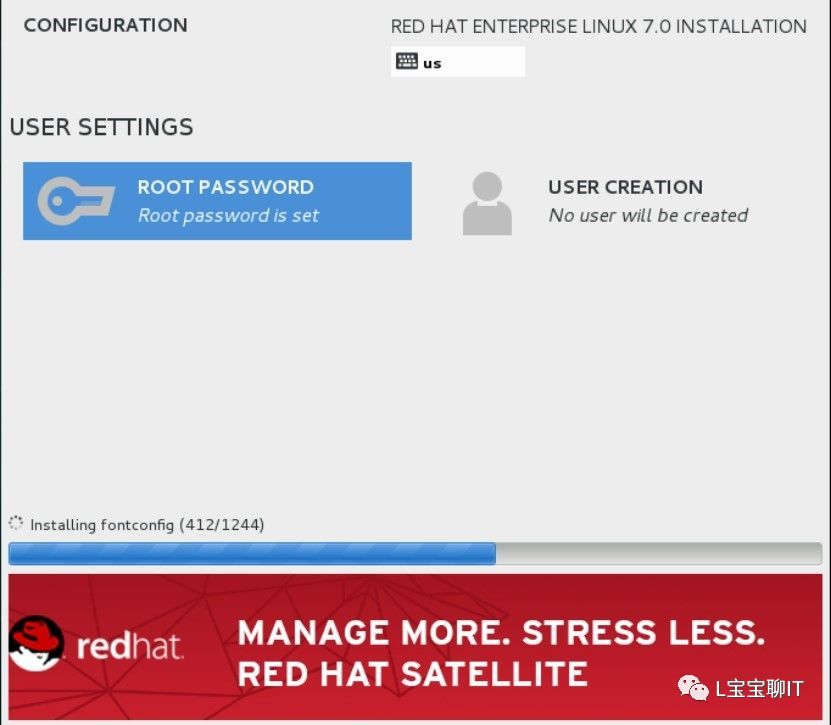
After the installation is complete, click reboot to restart, and enter the initial installation interface after restarting, configure the license and register the device
After the system is initialized for the first time, it enters the startup interface
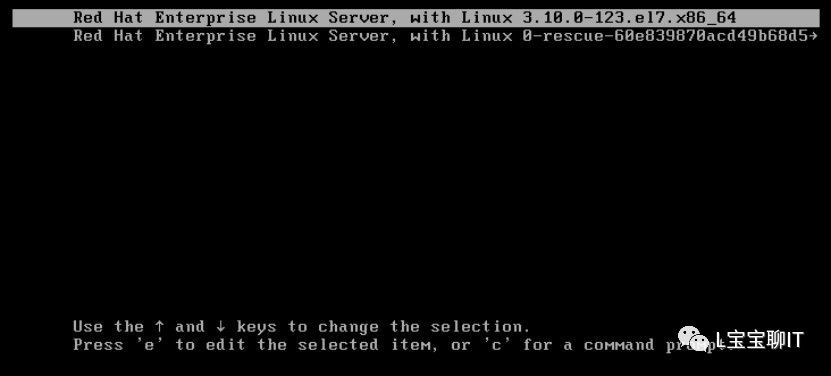
The first item is to start the system normally, and the second item is to restart the system.
Note:
1、 The system default encoding setting file, changed from /etc/sysconfig/i18n to /etc/locale.conf This file mainly defines the language environment variable settings of your current system, here is LANG=”en_US.UTF-8”, system presets Those language support,
2、 Common command installation: check anaconda-ks.cfg to determine whether to install the base software group
cat anaconda-ks.cfg
Part of the information displayed is as follows:
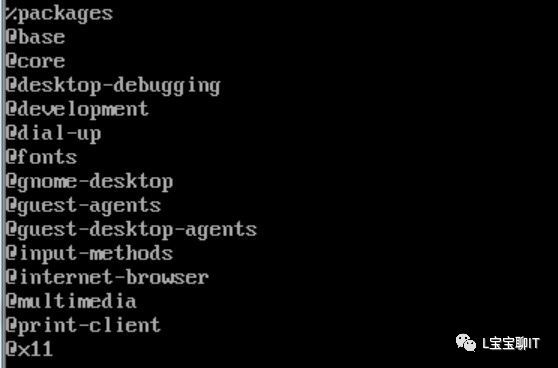
If the base software group is not installed, some conventional commands such as ifconfig cannot be used. You can use yum group install base to install the base software group.
Three, rhel7 default run level and terminal resolution modification
Modify the default run level: rhel7.0 has made a big change, open inittab as shown below:
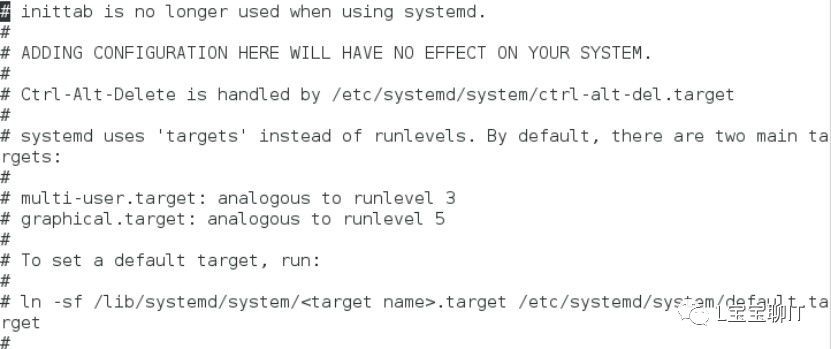
inittabis no longer used when using systemd.
The file /etc/inittab is no longer used. Systemd is an init program for linux and can be used as a substitute for sysVinit and Upstat. systemd uses the target concept, which is more free than sysvinit's run level, as an alternative
The third run level: multi-user.target
Fifth run level: graphical.target
The former is a symbolic link pointing to the target behind
runlevel3.target-> multi-user.target
runlevel5.target-> graphical.target
As shown below:
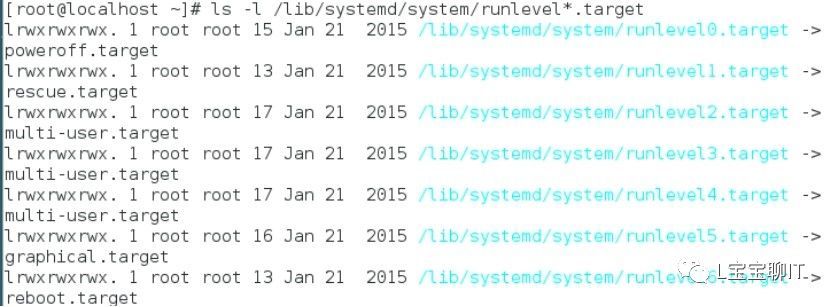
**Modify the boot default run level: **
method 1:
The default level is converted to 3 (text mode)
ln -sf /lib/systemd/system/multi-user.target /etc/systemd/system/default.target
Or the default level is converted to 5 (graphic mode)'
ln -sf /lib/systemd/system/graphical.target /etc/systemd/system/default.target
Reboot: reboot
Method 2:
systemctlset-default multi-user.target
Use this systemctl command to view the default target.
systemctlget-default
Switching the run level: Method 1:
Switch to: run level 3
Both are fine
systemctl isolate multi-user.target
systemctl isolate runlevel3.target
Switch to: run level 5
Both are fine
systemctl isolate graphical.target
systemctl isolate runleve5.target
Method 2:
init[0123456]
View the current running level
runlevel // still available
Modify the character terminal resolution:
Because it is installed in the VM, the resolution of the terminal interface is very high after the completion, and it is difficult to operate because RHEL7 uses grub2 instead of grub. The file to be modified in grub2 is /boot/grub2/grub.cfg ;
Here is a resolution comparison table (add vga=ask in grub.cfg, and the system will ask for the resolution to be set after restarting.)
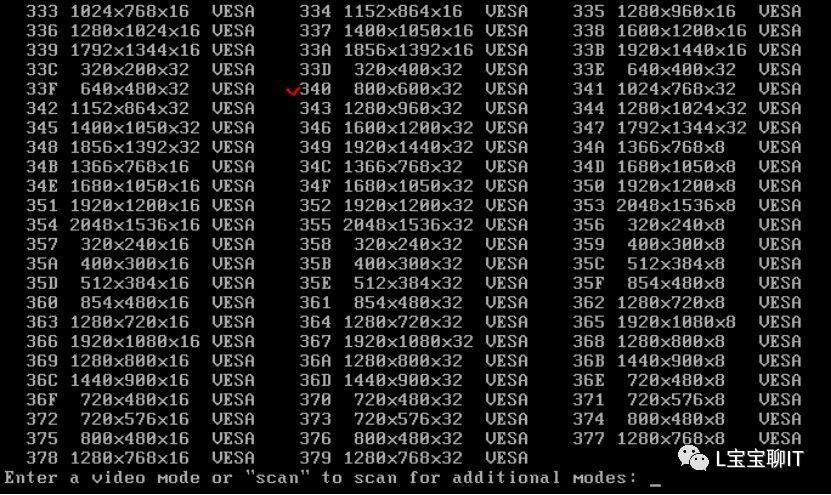
before fixing:

After modification, add vga=0x??? (the question mark represents the resolution code)

Attachment: How to realize the automatic login of rhel7 graphical interface: first find the /etc/gdm/custom.conf file
Then add the following content under daemon in the custom.conf file:
AutomaticLoginEnable=True
AutomaticLogin=root
Recommended Posts